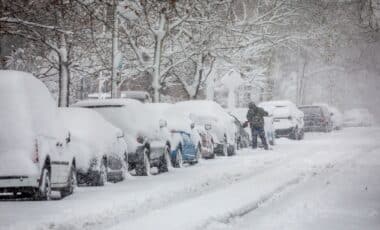This summer is forecast to be one of the hottest in United States history, with abnormally high temperatures stretching from Nevada to Florida, according to the National Oceanic and Atmospheric Administration (NOAA). Only the far reaches of northern Alaska may escape the heatwave that experts warn could prove unrelenting.
At the same time, the ability of federal agencies to respond to extreme weather events has been weakened by staff shortages and funding reductions, prompting fears among scientists and public officials about the country’s readiness to cope with intensifying climate impacts.
Federal Climate Infrastructure Under Pressure
Reduced operational capacity across key federal scientific agencies is straining national preparedness for extreme weather events. According to NOAA, hundreds of meteorologists have left the National Weather Service (NWS) in recent months.
Some offices, such as the one in Houston, Texas, are now operating without permanent leadership and with diminished service provision. These constraints coincide with what is expected to be a particularly severe summer.
Cuts implemented under the Trump administration’s Department of Government Efficiency (Doge) have contributed to this decline. In Texas, a mid-May heatwave saw the Rio Grande Valley reach temperatures higher than those recorded in Death Valley.
According to The Guardian, this occurred against a backdrop of understaffed federal weather offices and an approaching hurricane season, heightening the risks of delayed or reduced emergency response.
The lack of national support has shifted responsibility to local actors. Cities and states, including Tucson, California and Nevada, have passed heat-focused regulations and invested in infrastructure such as cooling centres and public awareness initiatives. But localised efforts are often underfunded and insufficient to match the scale of the challenge.
Public Health Risks Rising as Heat Intensifies
Extreme heat has become the leading cause of weather-related deaths in the United States, according to NOAA. A 2024 study cited by The Guardian found that heat-related fatalities have increased by 117% since 1999. Vulnerable populations — including prisoners, migrants, and children in poorly cooled schools — are most at risk.
Experts warn of wide-ranging impacts beyond physical health. Dr Adrienne Heinz, a clinical research psychologist at Stanford University, stated that extreme heat impairs cognitive function and emotional regulation. “Those executive functions like decision-making and inhibition and sequencing tasks, they all become harder.” she said, describing the experience as “like walking through mud.”
In Houston, described by Rice University scientist Sylvia Dee as “ground zero for climate change,” the cumulative toll of repeated heat events is fuelling frustration and alarm. Dee and her colleagues describe excessive heat as a form of “slow violence” that worsens existing public health challenges such as pollution and chronic illness.
While forecasts remain available, the uncertainty surrounding federal preparedness has raised questions about how effectively authorities can manage the health, safety, and economic risks of prolonged heat. As temperatures continue to rise, cities and communities are being urged to adapt quickly in the face of a changing climate.









